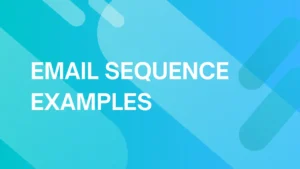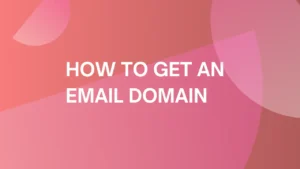
What Is Sales Prospecting? (Explanation, Strategies & Tools)
What is sales prospecting?
Sales prospecting involves identifying and reaching out to potential customers who might be interested in what you have to offer.
Think of prospecting as the groundwork for your sales strategy, laying the foundation for future deals.
Simply put, prospecting is about finding new leads who meet specific criteria that make them likely to become customers.
This involves more than just sending out a mass email or making random phone calls.
It’s about strategic engagement with individuals who fit your buyer persona—those hypothetical profiles that represent your ideal customer based on real data and educated speculation about demographics, behaviors, needs, and motivations.
Why is sales prospecting important?
If you’re looking to drive your sales through the roof, understanding the critical role of sales prospecting techniques is your starting point.
Without a strong pipeline of qualified email leads, even the most skilled sales teams will find it challenging to achieve their targets.
Prospecting is fundamental because it directly influences your ability to generate new business opportunities.
According to a RAIN Group study, top sales performers who excel at prospecting were able to secure 52 sales meetings per 100 target contacts, compared to only 19 meetings per 100 contacts for other sellers.
This stark difference not only shows the effectiveness of skilled prospecting but also its direct correlation with sales success.
The stages of the sales prospecting process
Understanding the stages of the sales prospecting process is crucial for any sales team looking to efficiently convert leads into profitable customers.
This approach ensures that every prospect is evaluated, engaged, and nurtured with precision to maximize the chances of a successful sale.
1. Research: The foundation of effective prospecting
The first step in the sales prospecting process is comprehensive research.
This phase involves gathering as much information as possible about potential customers to determine how well they match your ideal customer profile.
This involves examining the prospects’ professional backgrounds, LinkedIn profiles, company websites, and relevant social media activities.
Researching a lead thoroughly helps you understand their business needs and challenges and how your product or service can address those needs.
2. Qualification: Assessing prospect value
Once you have a basic understanding of your prospect, the next step is qualification.
This stage determines whether a prospect is worth pursuing and how much priority it should be given in your sales efforts.
Effective qualification is typically based on lead scoring, which can include factors such as the prospect’s budget, authority, need, and timeline (BANT), or it might be based on indicators like engagement with past marketing materials or the level of activity on relevant social platforms.
3. Outreach: Personalized communication
Once you put together a qualified list of prospects, the next step is outreach.
This stage is where the sales team actively engages with potential customers through personalized communication strategies.
Rather than a generic sales pitch, effective outreach today often involves adding value first—this could be sending a helpful article, a case study relevant to their business, or an invitation to a webinar that addresses current industry challenges.
How to do sales prospecting?
Effective sales prospecting is an art that combines strategy, timing, and personalization to open doors and deepen business relationships.
It starts with understanding your prospects, knowing how to segment them, and efficiently managing your outreach to convert leads into customers.
Build a target list
A well-researched target list is the cornerstone of successful prospecting—a curated selection of potential customers who are most likely to benefit from your product or service.
To streamline your efforts and focus your resources, you need to start by classifying prospects based on how well they match your customer persona and their likelihood of conversion. For example:
- High-priority prospects are those who match all criteria of your customer persona and have a clear business challenge that aligns with your product. These are people you share have a mutual connection or shared background.
- Mediu-priority prospects match some elements of your customer persona, have a relevant business challenge, and have some level of interaction with your online content or company.
- Low-priority prospects usually don’t align well with your customer persona, have an unclear business challenge, and limited interaction with your brand. If you don’t know where to start, asking for referrals can be a good first step.
Once you have a positive relationship with a customer, simply inquire if they know anyone else who might be interested in your solutions.
By focusing on targeted prospects and leveraging the power of referrals, you can make your email prospecting more effective and productive.
Ideal customer profile
To excel in sales prospecting, it’s critical to deeply understand who you’re selling to.
This means going beyond basic demographics to develop an ideal customer profile (ICP).
An effective ICP helps you target your outreach efforts more precisely so you can engage with prospects who are most likely to convert into paying customers.
This means you should have a well-rounded view of your potential customer before you ever make contact. You can start the research by:
- Exploring their career pages: Visiting a prospect’s career page can reveal the company’s growth areas, the skills they value, and cultural indicators. This information helps tailor your messaging to resonate with the company’s trajectory and needs.
- Subscribing to their blogs: Not only does this keep you informed about their latest products, services, and industry standing, but it also provides a steady stream of content that can spark conversation starters.
- Following on social media: Platforms like X (formerly Twitter) are a goldmine for prospect research. By following your prospects, you can get real-time insights into their business activities, industry changes, and more importantly, their pain points.
Prepare a personalized pitch
Because each prospect has unique needs, preferences, and backgrounds, recognizing this individuality is crucial to creating effective, personalized pitches.
The first step in personalizing your pitch is to understand what drives your prospect.
In addition to examining their blog content and analyzing social media activity, you should also review the company’s ‘About Us’ page.
This often-overlooked section of a website can provide a wealth of knowledge about a company’s mission, values, history, and team.
You can also expand your research by asking a number of questions:
- How is their sector performing? Are there emerging trends or looming challenges that your product or service can address?
- Where does the company stand among its competitors? Understanding their position can help you craft a pitch that highlights how your offerings can bolster their competitive advantage.
- What are the typical challenges faced by similar companies? This knowledge not only shows empathy but also positions you as a problem solver.
Outreach
Once you’ve gained a deep understanding of your prospect, the next step is to find a concrete reason to connect.
This could be a mutual connection, a recent trigger event such as a funding round or a product launch, or even their activity on your website.
Did they add a whitepaper or are offering a webinar?
These actions provide perfect openings for engagement.
Follow up
Mastering the art of follow-up can help you move a deal forward and also provide you with a second chance to reconnect with prospects who initially said no – but only if you do it well.
After your initial discovery call or meeting, timing your follow-up is key. Ideally, you want to reconnect within 24-48 hours while the conversation is still fresh in both your minds.
When reaching out, make it easy for the prospect to say yes by suggesting a specific timeframe and highlighting the value of the next meeting.
For example, you can write within your sales email template something like, “Would you have 30 minutes to follow up this week? I’d be happy to provide additional insights that might benefit your current challenges” comes across as engaging without being too pushy.
Received a final “no”? Rejection is an inevitable part of sales, but it also presents a learning opportunity.
Following a closed-lost deal, send a thoughtful follow-up email to understand the reasons behind the decision can be invaluable.
A simple “I understand that now might not be the right time, and I’ve closed your file on my end. However, I would greatly appreciate it if you could share why you decided not to go forward. Was it something in my approach, or perhaps something else?” can shed light on whether you need you need to refine your outreach.
A message like this one helps identify potential flaws in your sales approach and also maintains a positive relationship with the prospect, leaving the door open for future opportunities.
| Tip: Even after a rejection, keeping a professional and courteous line of communication can turn a no into a yes in the future. Prospects will remember your respectful handling of rejection and may think of you the next time their needs align with your offerings. |
Closing words
From initial research and understanding your ideal customer profile to crafting personalized pitches and strategically timing follow-ups, each step in the prospecting process is crucial.
Ultimately, sales prospecting is about building connections that lead to growth—for both your prospects and your business.
By investing time in understanding each potential customer and tailoring your approach accordingly, you’re doing a lot more than just trying to sell a product or service – you’re also offering a solution that meets their unique needs.
This approach to sales prospecting will not only help you close more deals but also foster long-term, valuable relationships with your clients.



